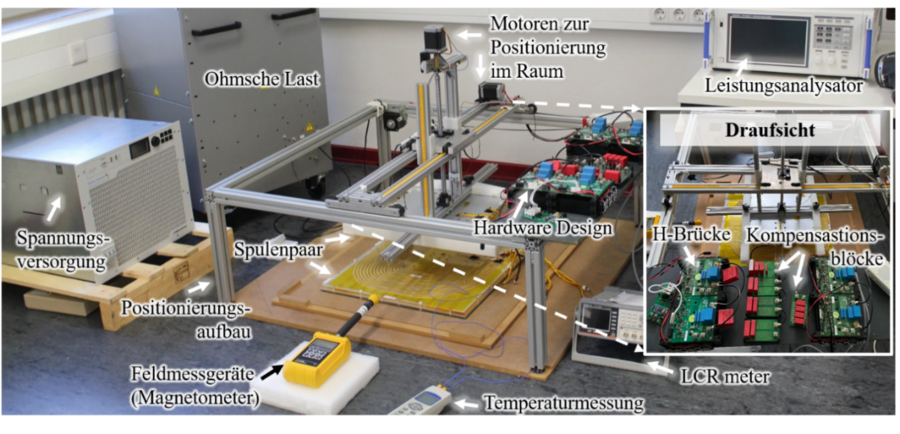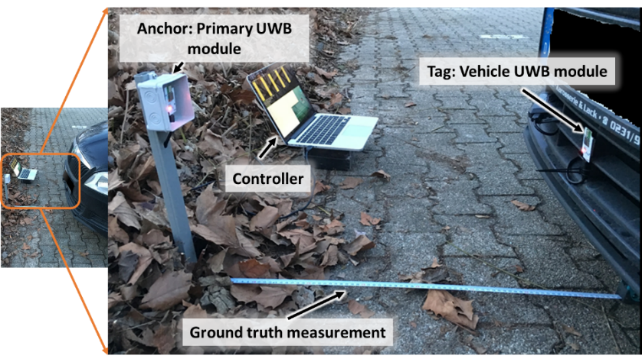Bidirectional Inductive Charging Systems
Fundamentals of design strategies, simulation-based shielding optimization, and electromagnetic environmental compatibility studies
Project Duration:
November 2016 - March 2021
Consortium:
University of Wuppertal
(Chairs EES and TET)
Funding:
Deutsche Forschungsgemeinschaft (DFG)
(Project no. 324925030)
Description
High-power inductive charging systems for electric vehicles simplify and accelerate the charging process and are under continuous testing at the prototype and demonstrator stages.
However, this does not currently consider more far-reaching concepts in which electric and hybrid electric vehicles act as energy storage systems for the connected energy grid. That is due to insufficient technical solutions for the required bidirectional inductive charging technology.
This research project investigates the engineering fundamentals of bidirectional inductive charging systems, considering their future usability and technical performance. This research also includes simulation-based preliminary investigations of electromagnetic compatibility (EMC) with regard to the electronic systems and environmental compatibility (EMC) for persons inside and in the vicinity of the vehicle. These characteristics depend on the effectiveness of the magnetic field attenuation by shielding systems, which must be considered in order to comply with current valid limits.
Particular technical difficulties arise from the combination of high-power flux densities of the alternating magnetic fields with the low electrical conductivities of the lightweight materials of modern electric vehicles.
In this research project, the fundamentals for suitable configurations of such bidirectional inductive charging systems are to be developed using laboratory and computer-aided simulations. In addition, appropriate shielding systems and the performance of different shielding materials are to be researched by means of suitable high-resolution numerical field simulation methods.
Moreover, a measurement and test environment for these shielding structures represent another central aspect of this project. Numerical field simulation methods are of particular importance for the design and optimization. This project focuses on extending these methods to enable more precise and realistic EMC field simulations with high-resolution human models allowing for a computer-aided optimization of these systems with regard to material use and weight minimization.
The particular scientific challenge here lies in the multiscale character of these three-dimensional field arrangements: thin and lightweight shielding structures, some of which have complex three-dimensional geometries, must be considered in spatially extended complex environmental geometries (e.g., in vehicles), in which spatially high-resolution human body models must be placed for electromagnetic field dosimetry.

Fig. 1: Laboratory test platform

Fig. 2: Setup with circular coils (left). Temperature distribution of the same setup after 160 minutes of operation with a transmission power of 2kW (right).

Fig. 3: Field test setup with ultra-wideband communication
